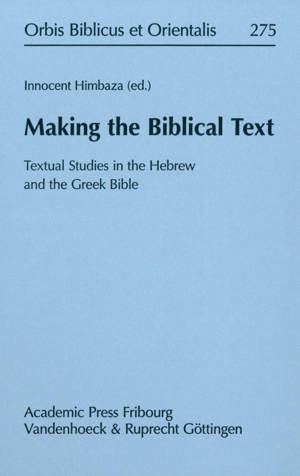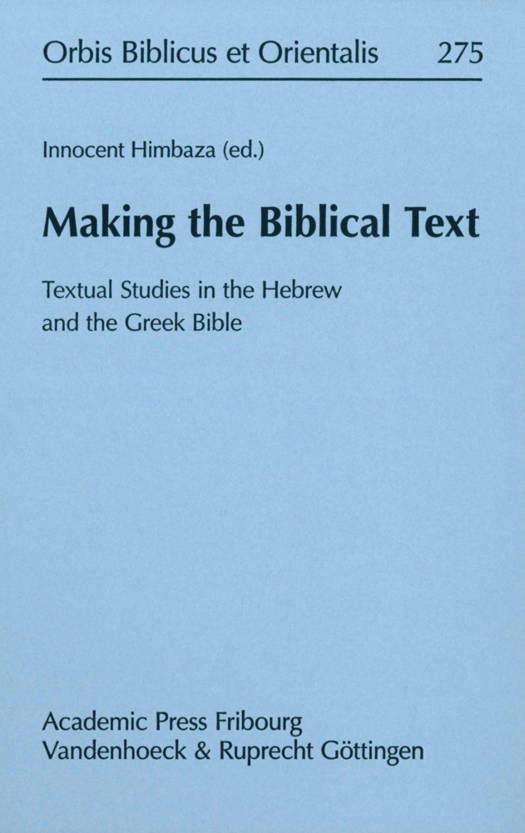
- Afhalen na 1 uur in een winkel met voorraad
- Gratis thuislevering in België vanaf € 30
- Ruim aanbod met 7 miljoen producten
- Afhalen na 1 uur in een winkel met voorraad
- Gratis thuislevering in België vanaf € 30
- Ruim aanbod met 7 miljoen producten
Zoeken
Making the Biblical Text
Textual Studies in the Hebrew and the Greek Bible
€ 96,95
+ 193 punten
Omschrijving
Originating in a symposium organized by the Institut Dominique Barthelemy and held on 4-5 November 2011 at the University of Fribourg, Switzerland, this book presents eight essays on the textual and literary history of the Hebrew Bible and the Greek Bible. It is commonplace today to speak of multiple text types in the earliest text history of the Hebrew Bible. But how can this multiplicity be most adequately explained? Does it result from different places, or from different Jewish communities reading texts in parallel text forms (Jews in Jerusalem, Samaritans, Alexandrian Jews, etc.)? Does one have to reckon with different qualities and/or evaluations of certain text forms? In other words, among the different text types known to us, were there some which enjoyed special esteem and recognition in antiquity - and if yes, by whom?
Specificaties
Betrokkenen
- Uitgeverij:
Inhoud
- Aantal bladzijden:
- 199
- Taal:
- Engels
- Reeks:
- Reeksnummer:
- nr. 275
Eigenschappen
- Productcode (EAN):
- 9783525543993
- Verschijningsdatum:
- 18/11/2015
- Uitvoering:
- Hardcover
- Formaat:
- Genaaid
- Afmetingen:
- 160 mm x 234 mm
- Gewicht:
- 439 g

Alleen bij Standaard Boekhandel
+ 193 punten op je klantenkaart van Standaard Boekhandel
Beoordelingen
We publiceren alleen reviews die voldoen aan de voorwaarden voor reviews. Bekijk onze voorwaarden voor reviews.







